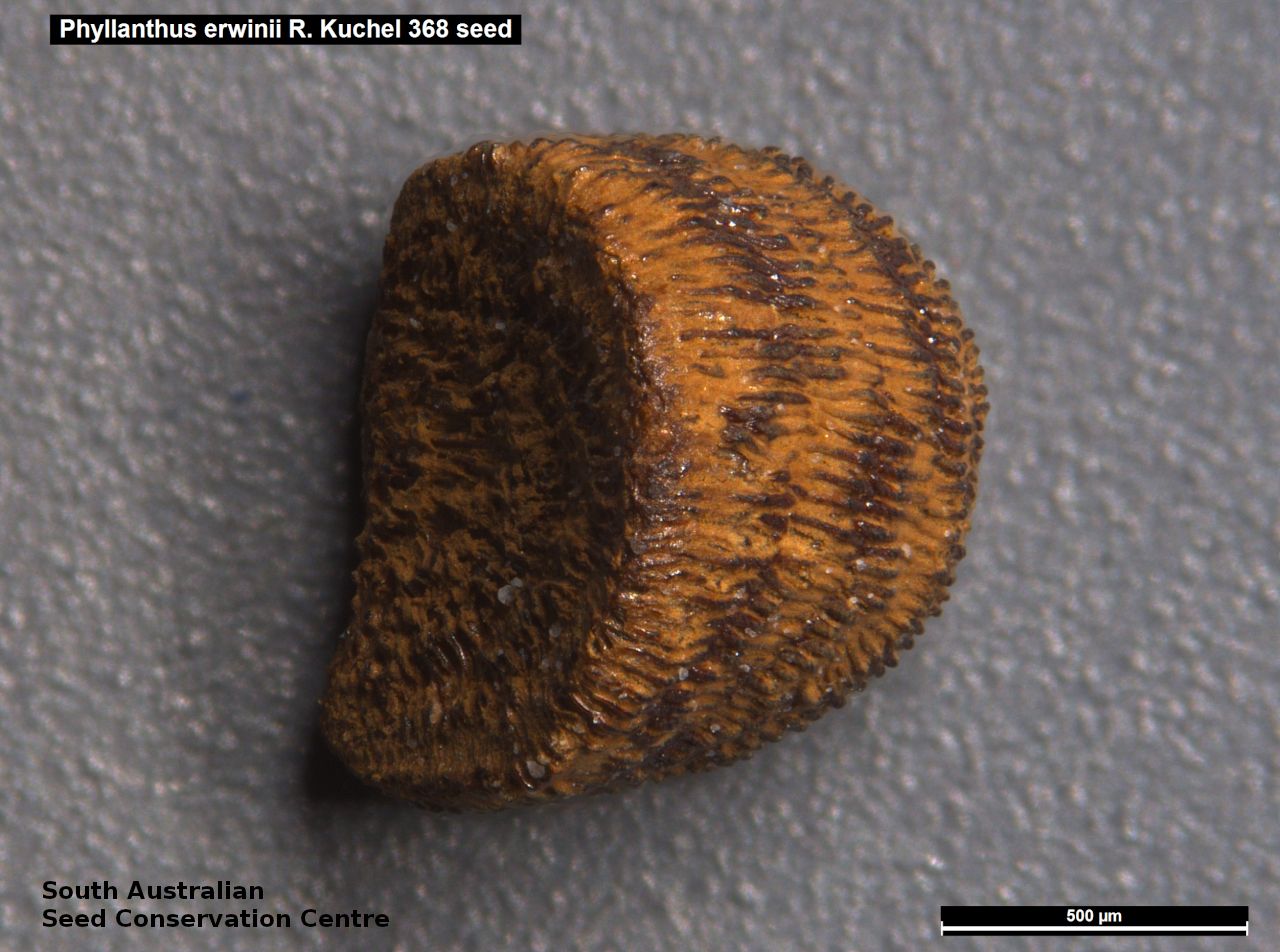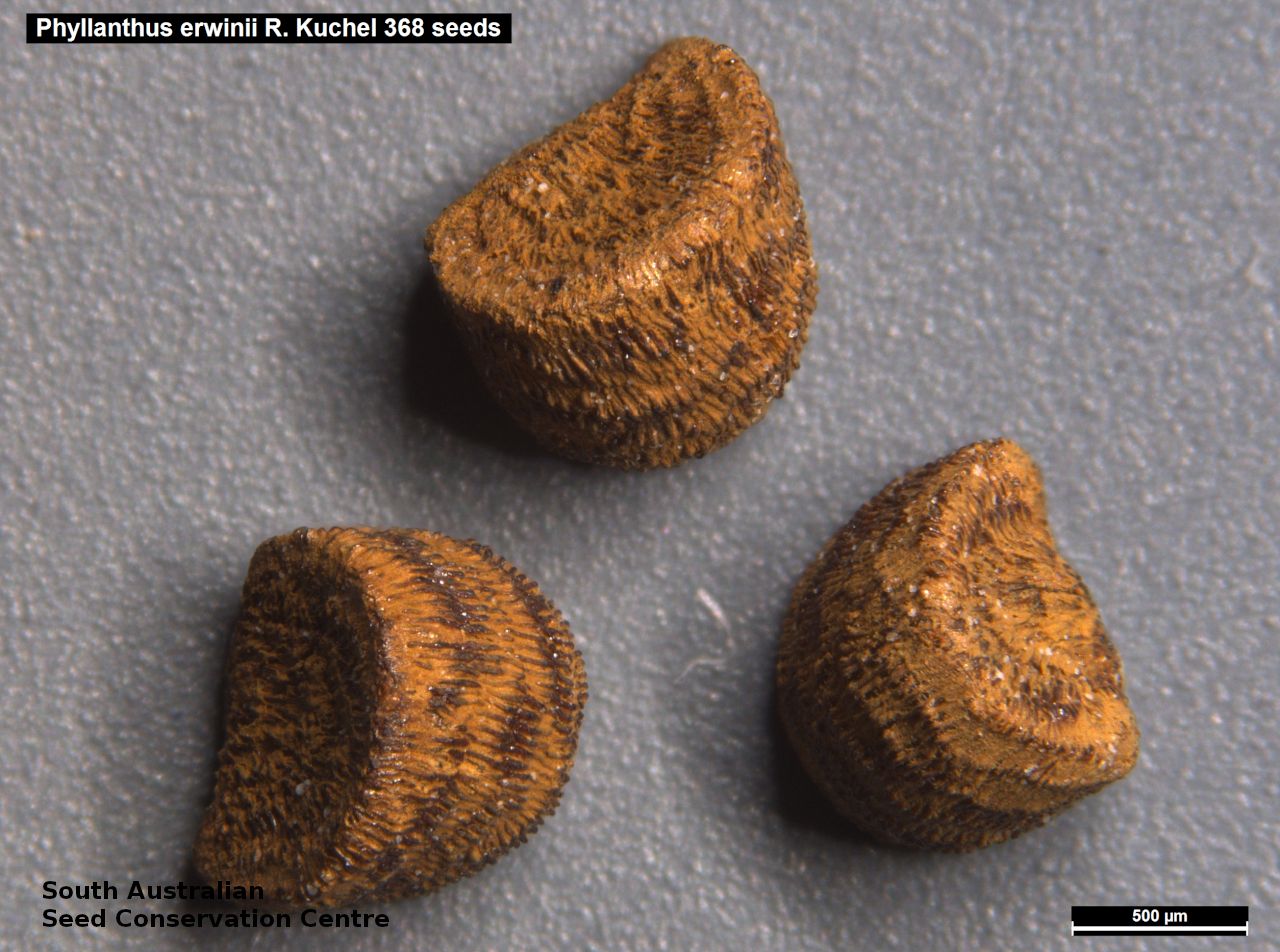



Prior names
Phyllanthus erwinii
Phyllanthus lacunarius var. deuterocalyx
Etymology
Phyllanthus from the Greek 'phyllon' meaning a leaf and 'anthos' meaning a flower; referring to some foreign species where the flowers grow on the edges of dilated leaf-like branchlets. Erwinii named after Erwin Gauba (1891-1964), an Australian botanist who first recognised this entity at the rank of variety.
Distribution and status
Found in the far north-western part of South Australia, growing in grassy woodlands, arid shrublands and tussock grasslands on rocky ground along ephemeral watercourses, in sandy and clayey soils. Also found in Western Australia and the Northern Territory. Native. Rare in South Australia. Common in the other states.
Herbarium region: North Western
NRM region: Alinytjara Wilurara
AVH map: SA distribution map (external link)
Plant description
Monoecious perennial herb to 20 cm tall with rounded stems which are glabrous or scabrous in longitudinal rows up the stem. Leaves alternate, in opposite pair, plane to concave, to 23.5 mm long and 7-6 mm wide, obovate to oblanceolate, grey-green, occasionally glabrous, more commonly scabrous. Male inflorescence in clusters with 1-3 white, sometimes tinged red flowers. Female inflorescence solitary, scattered among males. Flowering between April to October. Fruits are green turning grey with age, depressed ellipsoid capsule to 1.6 mm long 3.2 mm wide, glabrous, grooved. Seeds are brown sectoroid seed to 1 mm long and 1 mm wide, with a wrinkled surface. Seed embryo type is spatulate fully developed.
Seed collection and propagation
Collect seeds between April and November. Collect individually or break off short fruiting stems with fat capsules with hard dark seed. Green capsules can be collected if the seeds are dark and hard. Place the capsules in a tray and leave to dry for one to two weeks. Then gently rub the capsules with a rubber bung to dislodge the seeds. Use a sieves to separate the unwanted material. Store the seeds with a desiccant such as dried silica beads or dry rice, in an air tight container in a cool and dry place.